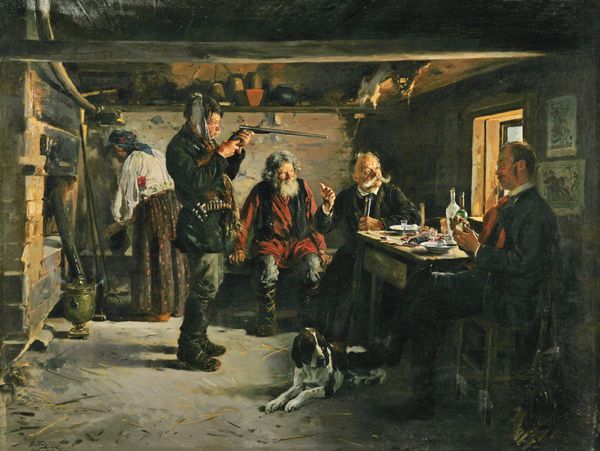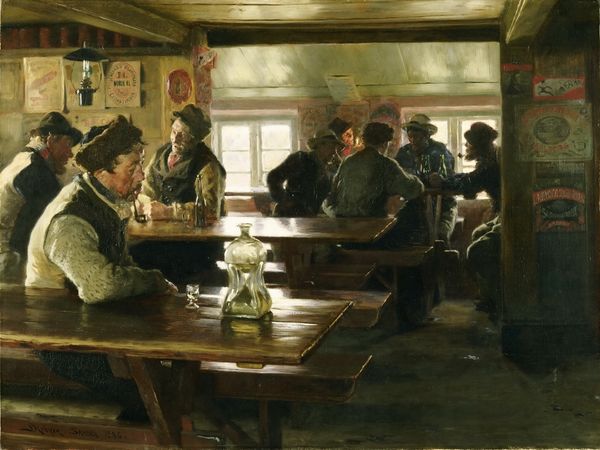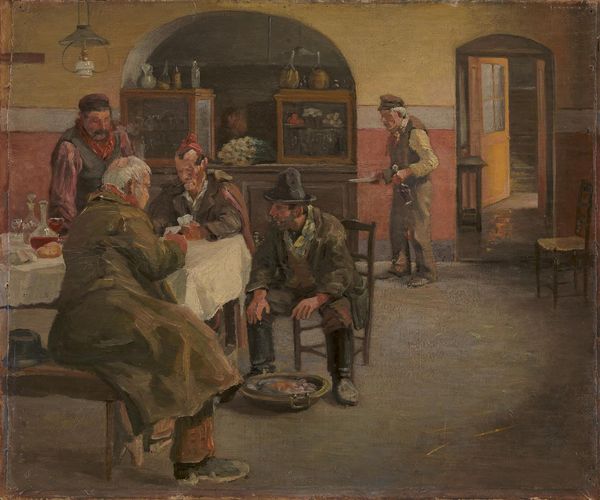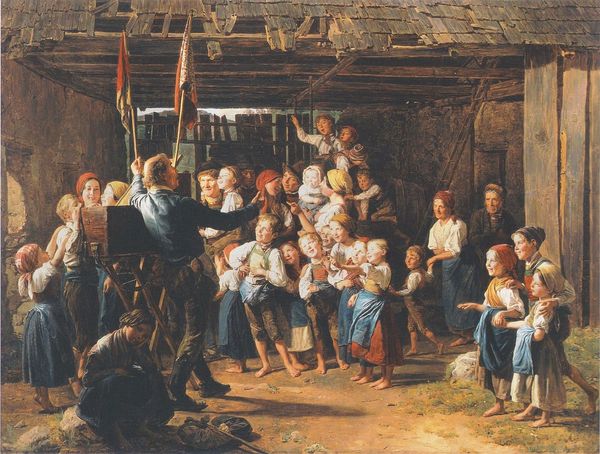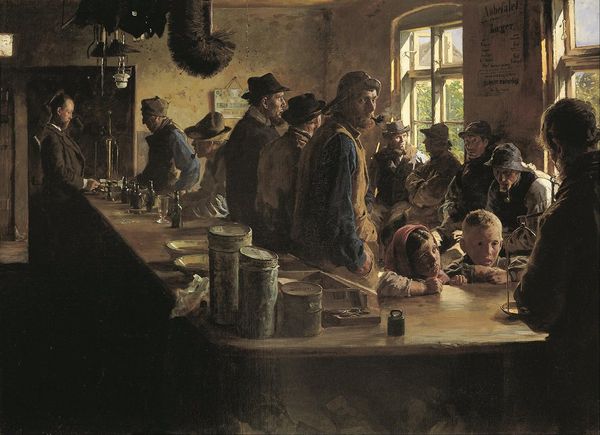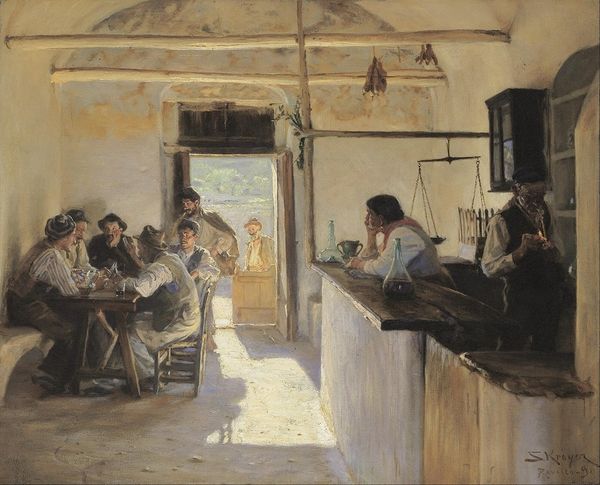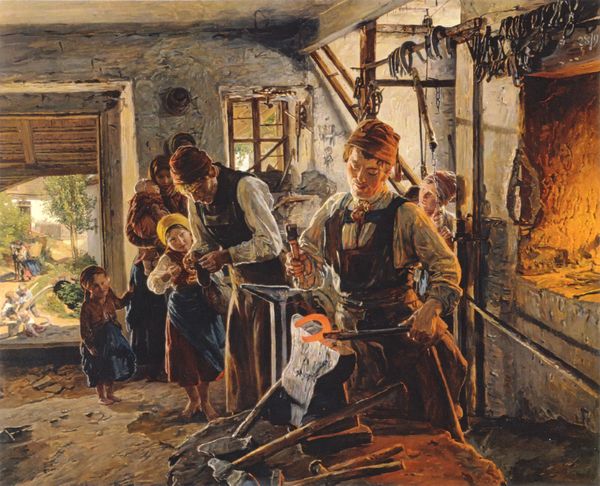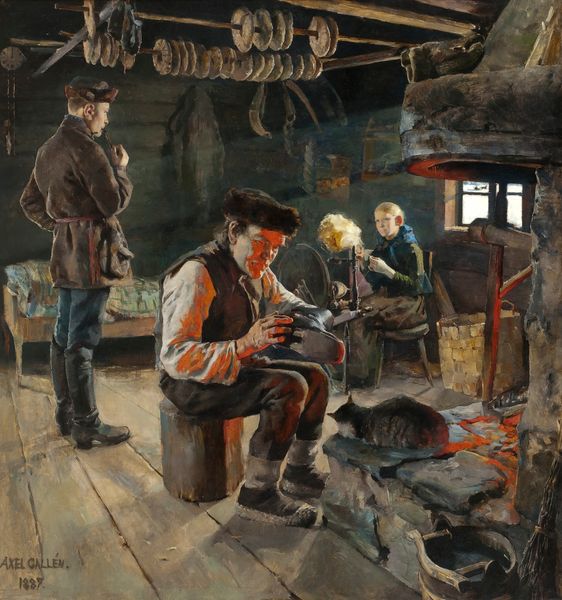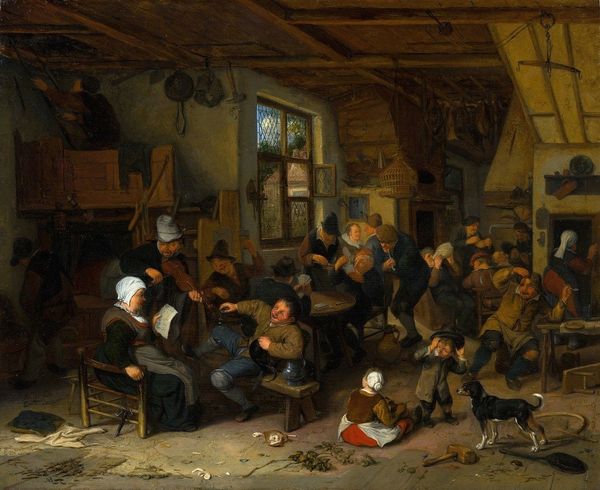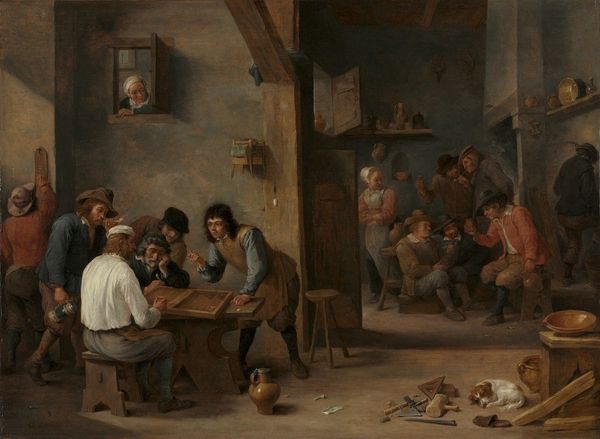
Copyright: Public domain
Editor: Here we have "Rachenitsa," an 1894 oil on canvas by Ivan Mrkvička. It seems to capture a lively social gathering. The figures are all men, seemingly enjoying music and dance. The lighting and muted palette give it almost a documentary feel. What do you see in this piece, considering its historical context? Curator: What strikes me is how this seemingly simple scene reveals so much about cultural identity and the construction of national narratives. Mrkvička, though Czech, spent considerable time in Bulgaria. The painting depicts a “rachenitsa,” a traditional Bulgarian folk dance. We need to consider how this genre painting, rendered in the academic style, contributes to a sense of national identity. Do you think this portrayal romanticizes Bulgarian peasant life for an urban audience? Editor: I see what you mean about national identity. The painting feels both intimate and staged. Maybe the choice of the academic style was to legitimize this image of Bulgarian culture and bring it to a broader audience. The artist perhaps considered how he depicted the scene as part of something larger. Curator: Exactly. The very act of selecting, framing, and then displaying this particular subject is a powerful assertion of value. This seemingly casual scene is charged with political meaning. The clothing they wear, the setting they are in… Can you think about how this image might reinforce specific cultural values or create a sense of “otherness” depending on where it's exhibited and who is viewing it? Editor: It's interesting how something that seems like a simple celebration can become a way to define and present a culture. It definitely makes me consider the purpose and potential impact of these types of images. Curator: Indeed. Considering how art interacts with society and shapes perceptions allows us to look beyond the surface and understand its enduring relevance. Editor: This has provided a richer understanding of this painting, thinking beyond just the visual elements to explore the culture and history behind the work. Thanks.
Comments
No comments
Be the first to comment and join the conversation on the ultimate creative platform.
